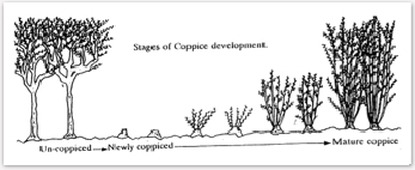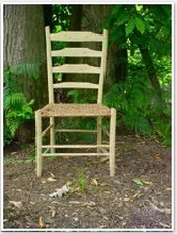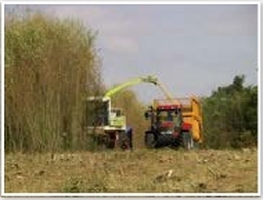Coppice Forestry

Coppice forestry is the repeated process of harvesting poles from a living tree stump during the dormant winter season. Think of it as just about the most intensive pruning imaginable. When a tree is felled, it is not dead. Depending on its age, there is typically a well-developed root system that remains, looking to feed and be fed by its aerial parts. We've all witnessed natural forms of coppice - those persistent stems that just keep regrowing around a stump each and every time they're cut back. What makes coppicing a desirable trait is that trees consciously managed this way can provide copious quantities of small diameter poles on regular cycles without replanting for literally hundreds of years. Imagine it as a tall, woody agricultural crop. These poles can then be used for fuel wood, fencing material, craft work and more.

Over 1000 years ago (and likely far earlier) the people of the British Isles began to consciously manage their woodlands as coppice. At this point, it is believed that virtually all of Britain's old growth forest had been cut. Wood was an essential product for all people at this point in history, being used for construction, livestock containment and most importantly, heating, cooking and industrial fuel. The practice of coppicing provided people with a reliable, steady crop of fast growing poles that could be converted to suit the needs of the people. When settlers began to colonize North America, the abundant forests provided a bounty of high quality timber and thus, the practice of coppicing was basically unnecessary. That is, until now...

With energy costs rapidly rising, the establishment of coppice woodlands provide a steady source of poles for communities, farms and foresters. As biomass heating systems become more and more common as a means of renewable energy, the establishment of coppice can provide a new source of livelihood, and a steady, reliable crop that will grow more productive with each passing generation.
We strongly encourage landowners to incorporate coppice woodlands into the design of their properties as a way of developing long term wood and heating energy security. In this way, we give birth to a perennial resource for future communities.
We strongly encourage landowners to incorporate coppice woodlands into the design of their properties as a way of developing long term wood and heating energy security. In this way, we give birth to a perennial resource for future communities.

